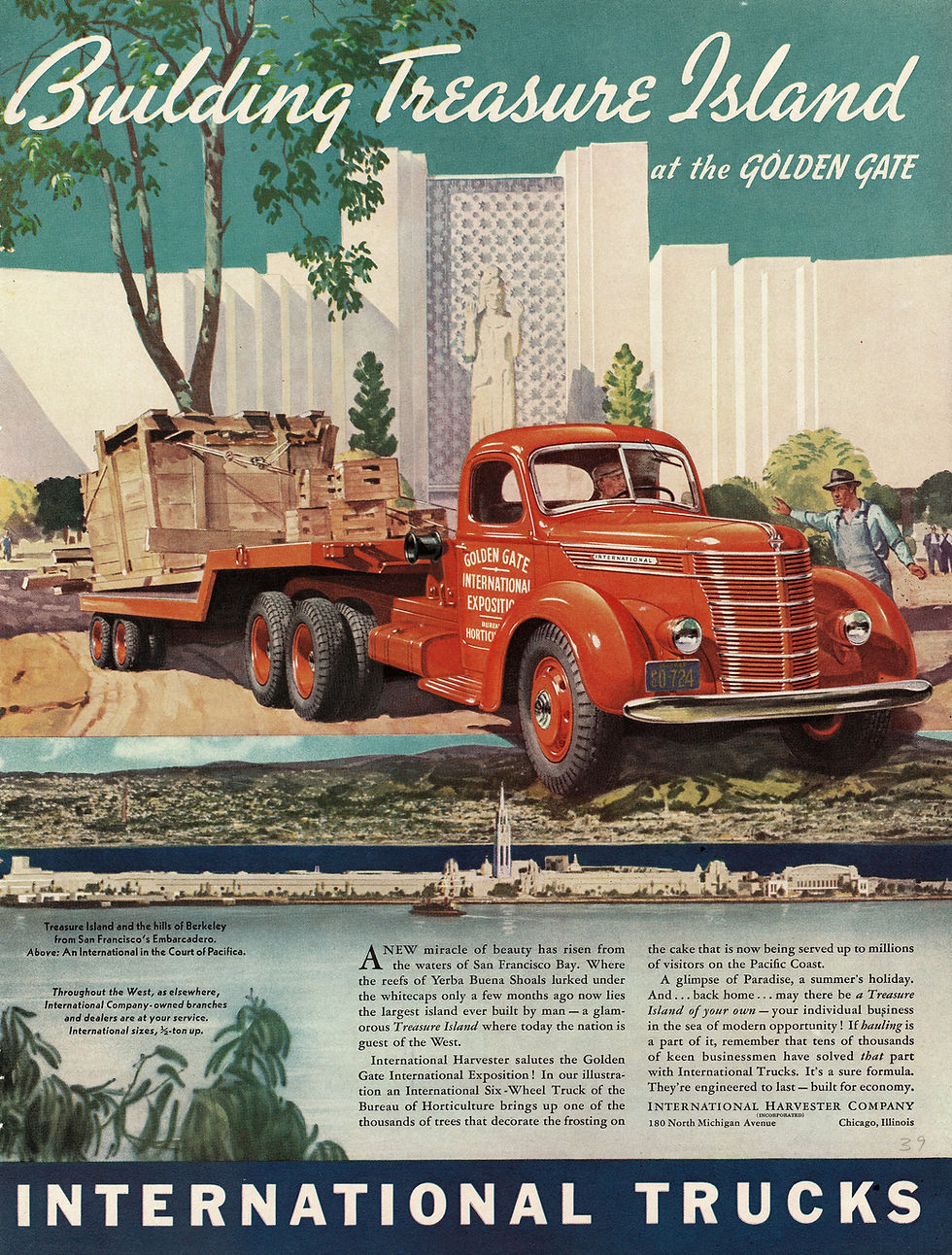
Building the Bay Bridge & Treasure Island
1933 – 1939
1933
Construction of the San Francisco-Oakland Bay Bridge
The San Francisco-Oakland Bay Bridge began construction on July 9, 1933. At the time, the bridge, designed by Charles H. Purcell, was considered an engineering marvel, requiring a new type of suspension design with the “largest and deepest foundations on record, the world's largest tunnel [. . .and] the longest and heaviest cantilever span in the United States.” (California Highways and Public Works, 1936)
California Governor Frank Merriam officially opened the bridge on November 13, 1936, by cutting the gold chains across the traffic lanes with a torch. Then a four-day festival celebrated the finished bridge with parades and fireworks. Thousands eager to cross the bridge caused the biggest traffic jam in San Francisco’s history to date.
The bridge continues to provide access to San Francisco for over 100,000 vehicles every day. Damaged by the 1989 Loma Prieta earthquake, the eastern span of the bridge was rebuilt. For a great view of the bridge, visit the Bimla Rhinehart Vista Point, which was built on a pier of the original eastern span.


1933
Planning a World’s Fair on Water
In 1933, the San Francisco News published a letter proposing a world’s fair to be held at the end of the decade. The News responded:
A WORLD’S FAIR to celebrate completion of the greatest bridges ever conceived! A great exposition to signal a new phase of San Francisco as metropolis of the Pacific coast!
The “great exposition” would become the Golden Gate International Exposition. The site would be an island built atop Yerba Buena Shoals, a submerged rocky outcropping in the Bay. This island would serve an additional purpose: a new airport would be built there after the expo closed.
All this became possible in 1934, when San Francisco leaders persuaded President Franklin Roosevelt that the project would employ thousands and reap economic benefits. Military leaders supported the project. The island’s potential as a Navy base was recognized from the beginning.


1936
Treasure Island Emerges
The YBI shoals was chosen to be the site of the world’s fair and airport. How to build a world’s fair and an airport on submerged rocks beneath the Bay? Build an island, of course.
Primarily funded by the federal government, the island was built in 22 months by the Army Corps of Engineers, and completed in November of 1937. The total cost was approximately $4,000,000.
Would traces of gold, washed into the Bay during the Gold Rush, be found on the island? Evidently not, but in 1937 publicity directors named the place “Treasure Island,” and the pirate theme was born.


1938
Airport buildings
In 1928, Mills Field Airport was established, renamed San Francisco Airport in 1930, and now called SFO. But a site closer to the city was considered desirable, and city leaders decided that the island on the shoals would become the new airport.
The federal government funded the airport buildings. You are currently in “Building One.” Its “Art Moderne” style includes the step-back architectural design, the long “eyebrow” over the front portico, the window detailing, and the terrazzo floors of the massive lobby.
In addition to hosting the GGIE’s administrative offices, it was the terminal for Pan American Airways. Its blue-glass control tower and aviation-themed relief panels on the western walls broadcast the building’s purpose.
Building Two, designed as a hangar, was the “Hall of Aerial Transportation” during the GGIE. Above its entrance, “The Spirit of Aerial Transportation” sculpture cradles a globe embossed with an airplane (the sculpture has been temporarily removed during construction). Stylized bamboo molding frames the doorway, conveying the Pacific theme. Building Three, also a hangar, was the “Palace of Fine and Decorative Arts.” George Kelham and Will P. Day were the architects of the airport buildings; Kelham was a member of the architectural commissions of both the Panama Pacific International Exposition (San Francisco, 1915) and the GGIE.


Explore Image Gallery








